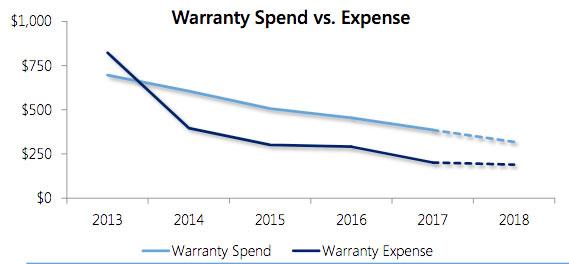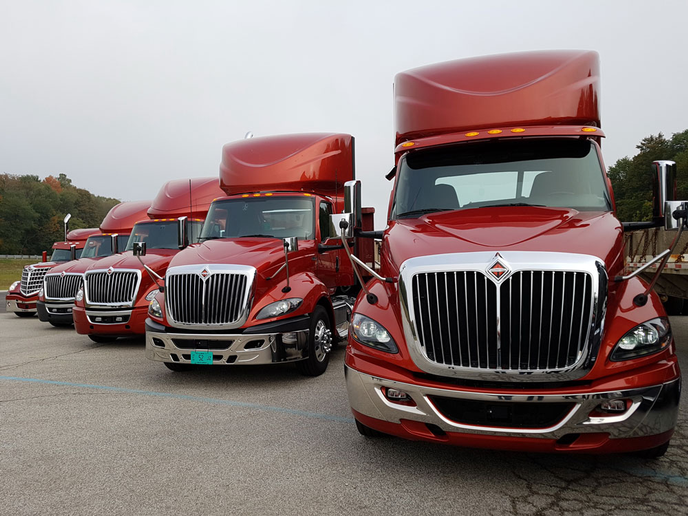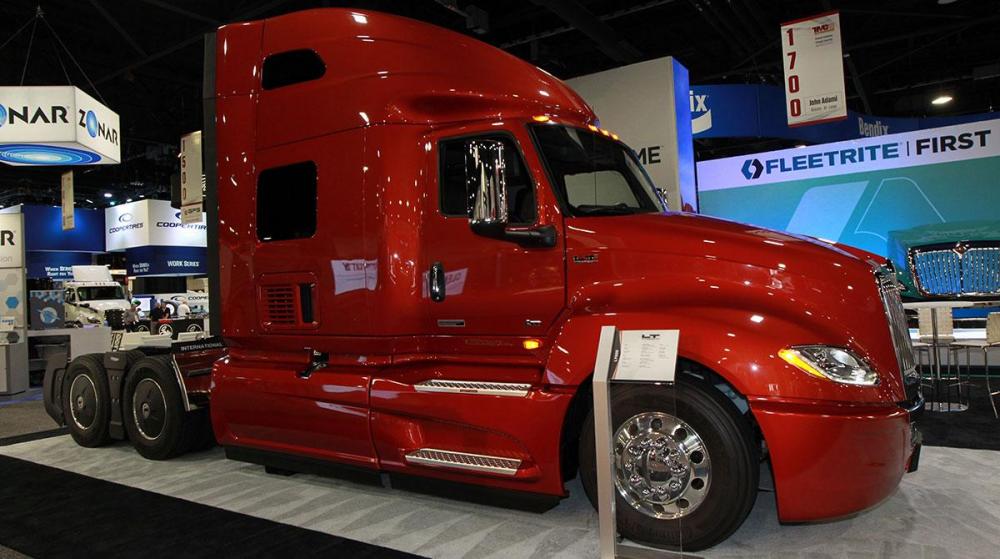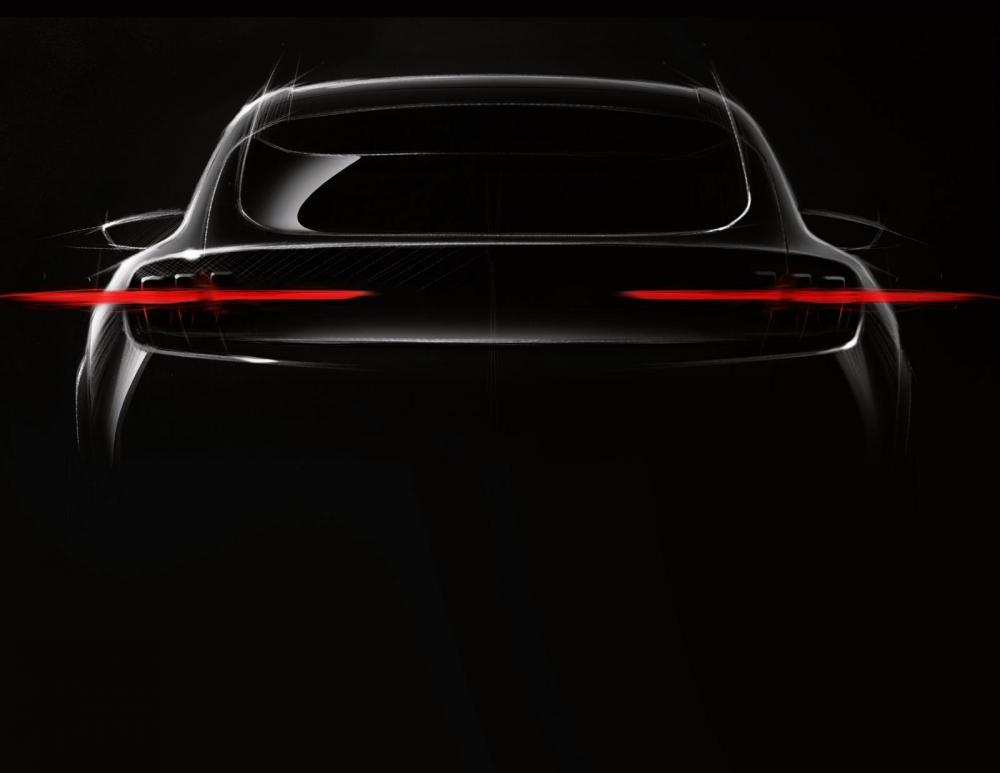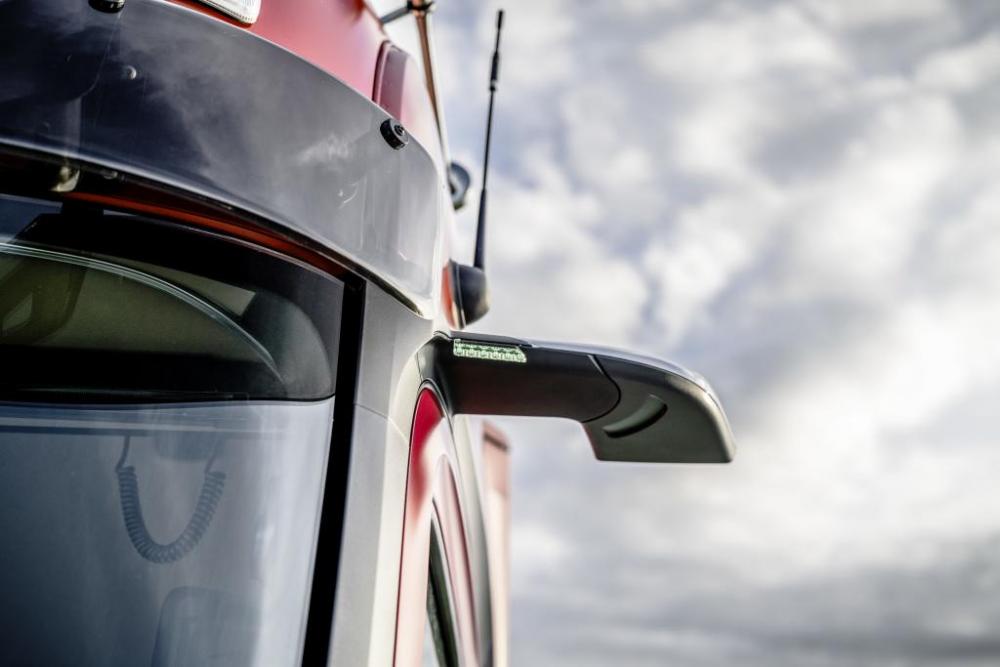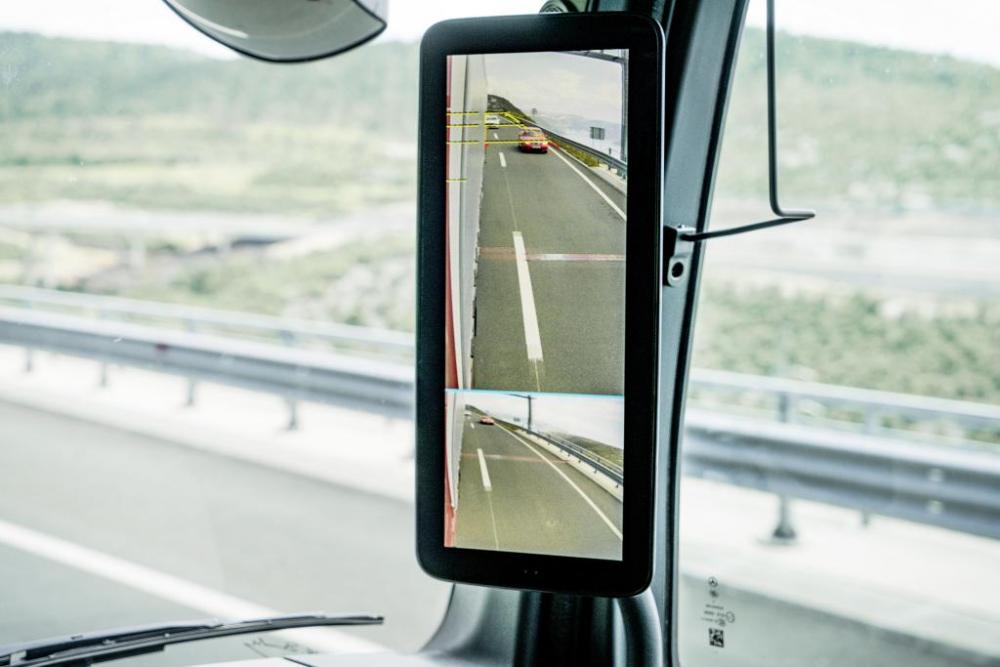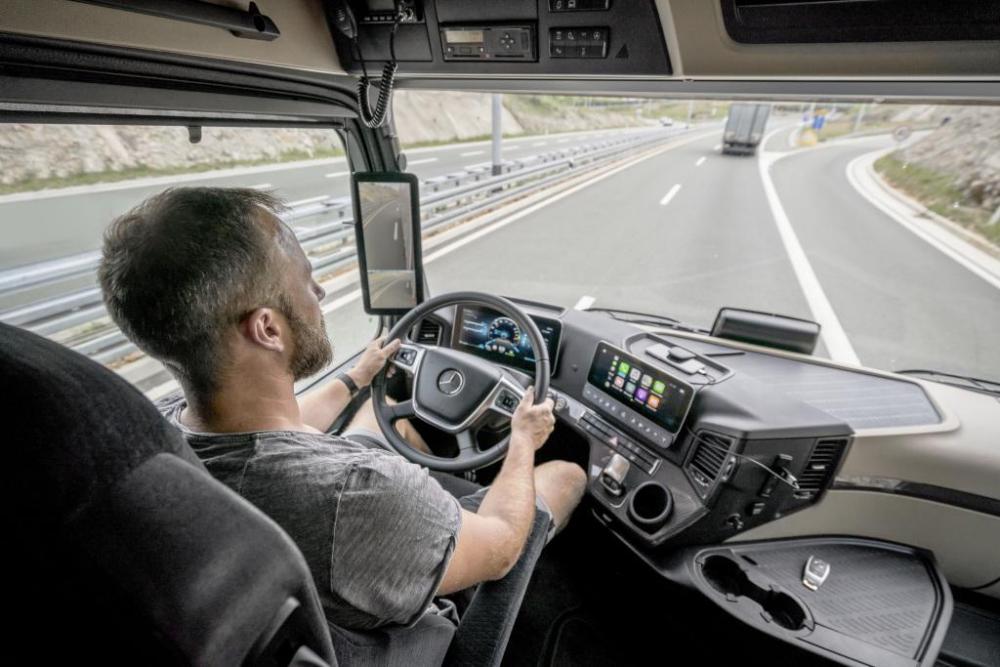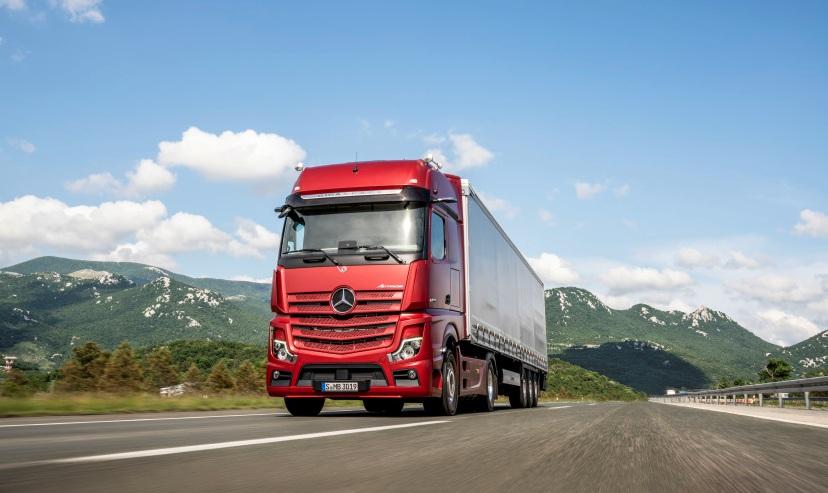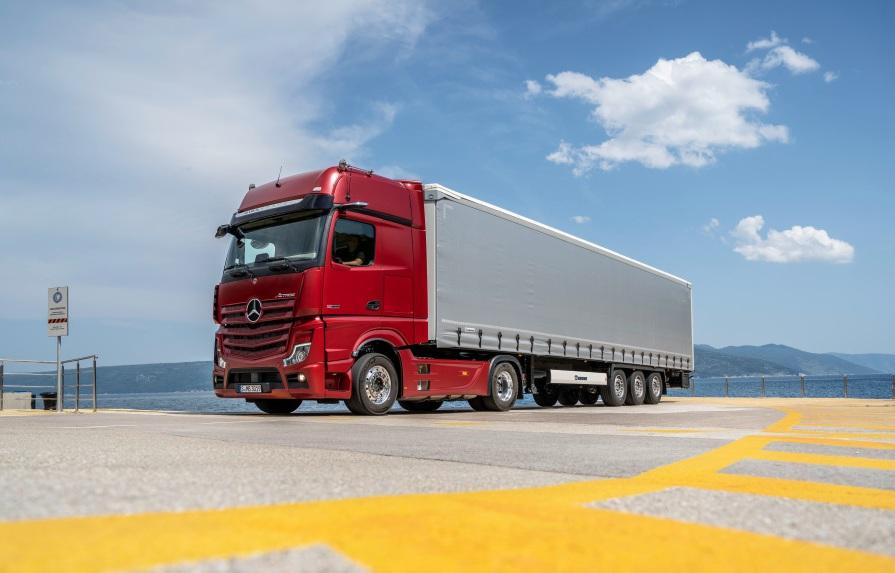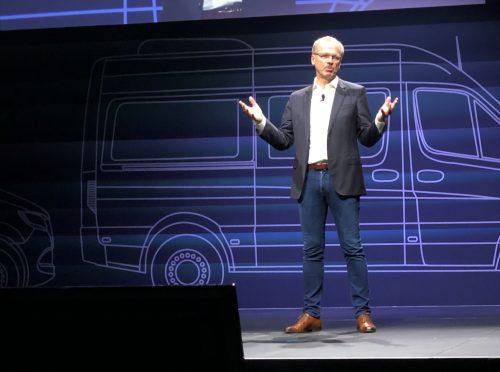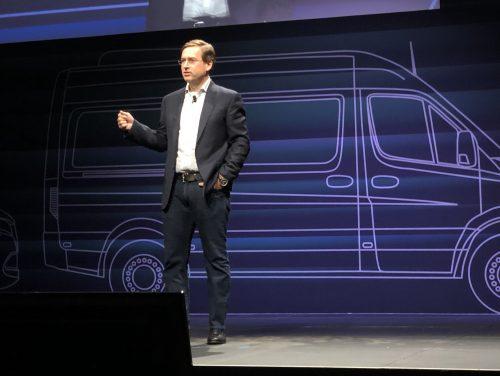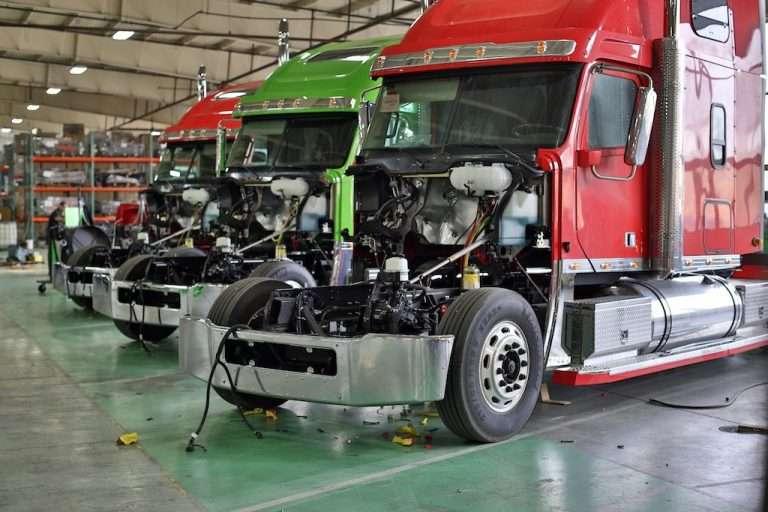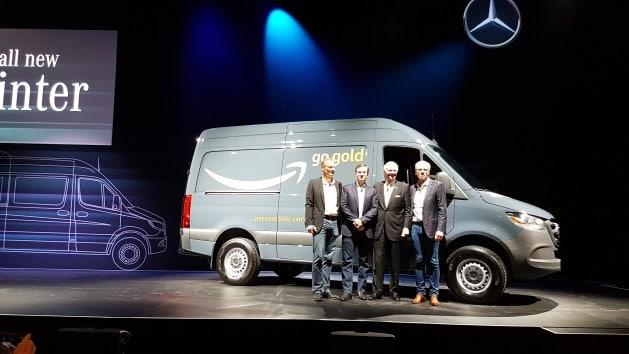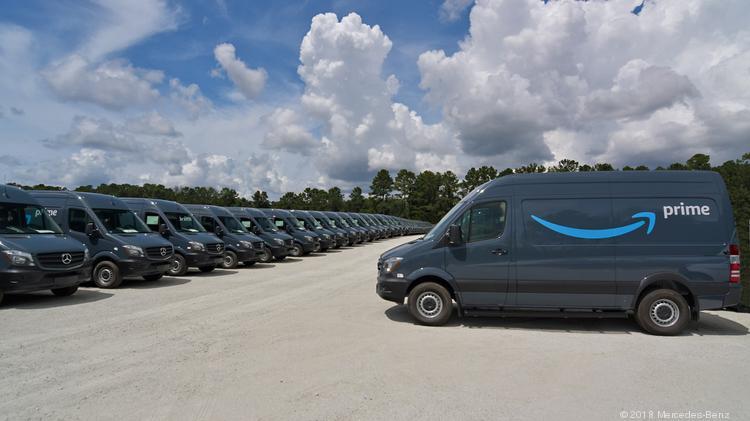
kscarbel2
Moderator-
Posts
18,550 -
Joined
-
Days Won
112
Content Type
Profiles
Forums
Gallery
Events
Blogs
BMT Wiki
Collections
Store
Everything posted by kscarbel2
-
I would have thought your KATO to have a Mitsubishi engine. Is this your crane? http://www.graysonline.com/lot/0010-3001816/transport-trucks-and-trailers/mobile-crane-kato-nk-200-20-ton-capacity#
-
Trump threatens tariffs on additional $267 billion in China imports Steve Holland, Reuters / September 7, 2018 WASHINGTON -- U.S. President Donald Trump said on Friday that he has tariffs ready to go on a further $267 billion worth of Chinese imports, as the world awaits his decision on imposing levies on $200 billion worth of the Asian nation's goods. “The $200 billion we are talking about could take place very soon depending on what happens with them. To a certain extent its going to be up to China, Trump said. "And I hate to say this, but behind that is another $267 billion ready to go on short notice if I want. That changes the equation.” Hours after a public comment period closed on his $200 billion China tariff list, Trump told reporters aboard Air Force One that he was "being strong on China because I have to be." Trump also said on Friday the United States and Japan have begun discussion over trade, saying that Tokyo "knows it's a big problem" if an agreement cannot be reached. "We're starting that," Trump told reporters aboard Air Force One. "In fact Japan has called us ... they came last week." "If we don't make a deal with Japan, Japan knows it's a big problem," he added. Trump, who is already challenging China, Mexico, Canada and the European Union on trade issues, has expressed displeasure about his country's large trade deficit with Japan, but had not asked Tokyo to take specific steps to address the imbalance. On Thursday, though, CNBC reported he had told a Wall Street Journal columnist he might take on trade issues with Japan, causing the dollar to slip against the yen. More on China Trump has already imposed 25 percent tariffs on $50 billion worth of Chinese goods, mostly industrial machinery and intermediate electronics parts, including semiconductors. The $200 billion list, which includes some consumer products such as cameras and recording devices, luggage, handbags, tires and vacuum cleaners, would be subject to tariffs of 10 percent to 25 percent. Cell phones, the biggest U.S. import from China, have so far been spared, but would be engulfed if Trump activates the $267 billion tariff list. Trump's threatened tariffs, now totaling $517 billion in Chinese goods, would exceed the $505 billion in goods imported from China last year. But 2018 Chinese imports through July were up nearly 9 percent over the same period of 2017, according to U.S. Census Bureau data. Earlier on Friday, White House economic adviser Larry Kudlow told Bloomberg Television the administration would evaluate public comments before making decisions on the $200 billion tariff list. The U.S. Trade Representative's office received nearly 6,000 comments and held seven days of public hearings on the proposed levies. Most comments were from companies seeking to remove products from the tariff list, arguing there were few, if any alternative sources and the duties would cause financial hardship. Comparatively few applauded the tariffs. Retailers had successfully kept high-profile consumer electronics such as cell phones and television sets off of previous tariff lists. But David French, top lobbyist for the National Retail Federation, whose members include Amazon.com, BJ’s Wholesale Club and Macy’s, said nearly every consumer good could be affected if Trump follows through on all threatened tariffs. "The Chinese aren't paying these tariffs, American families are going to pay these tariffs. These are taxes and they're going to find their way into the pocket book of folks around the country," French said. Still talking to China Kudlow, who heads the National Economic Council, told CNBC the administration was still talking with China about trade issues but so far China had not met U.S. requests. The United States has demanded that China better protect American intellectual property, cut its U.S. trade surplus, allow U.S. companies greater access to its markets and roll back its high-technology industrial subsidy programs. "We are still talking with China on a number of issues ... Those talks will continue to go on. We want lower (trade) barriers across the board," Kudlow said. Specifically, Kudlow said, the United States was seeking "zero tariffs, zero non-tariff barriers, zero subsidies, stop the IP theft, stop the technology transfer, allow Americans to own their own companies." "Those have been our asks for many months and so far those asks have not been satisfied," he said. "However, hope springs eternal."
-
Navistar Bullish on Truck Market as it Reports Strong Third-Quarter Results Deborah Lockridge, Heavy Duty Trucking (HDT) / September 6, 2018 Navistar is bullish on the trucking industry and its own growth, as truck orders appear to show no signs of slowing and the company reports its Class 8 market share is up 2.7 points over a year ago while its 13L heavy engine share more than doubled. In its third-quarter 2018 earnings call on Sept. 6, Navistar reported higher revenues, led by a 25% increase in its truck segment for its fiscal quarter ending July 31. Net income rose to $170 million, up from $37 million a year ago. Profit in the truck segment alone rose to $165 million, from $7 million a year ago. Navistar is predicting that Class 8 truck sales industry-wide will end 2018 between 260,000 and 280,000, and projects 2019 to be about the same, in the 255,000-285,000 range. That compares to 207,000 in 2017. For Class 6/7 medium, Navistar is projecting sales of 95,000 for this year and next, up from 86,000 in 2017. Troy Clarke, Navistar chairman, president and CEO, pointed out that economic conditions are ripe for industry growth, with GDP expansion of 4.1% the strongest since 2014, July consumer confidence the highest since 2000, and the purchase manager’s index on manufacturing the highest since 2004. “These conditions support fleet utilization, higher freight rates, and improved carrier profits,” he told investor analysts and reporters in the call. “It’s just a great time to be in the truck business.” For the quarter ending July 31, Navistar officials said, its retail market share in the U.S. and Canada for Class 8 heavy trucks was 13%, up from 10% a year ago. Number for medium-duty Class 6/7 were down from 25% to 22%, but officials pointed out that the new MV model for that market, announced in the spring, only started taking orders in July, so it expects that metric to improve. Clarke also pointed to record industry-wide July Class 8 truck orders of more than 52,000, and said there are industry backlogs into the second quarter of 2019. Some skeptics, he said, are questioning whether these all will actually be built, or if some are placeholders for fleets wanting to make sure they will have build slots, or stock unit orders for dealers. “These are all good questions,” he said. “At Navistar we attempt to manage reporting of orders as accurately as possible, and we don’t expect a lot of cancellations.” With the increasing popularity of the new International LT on-highway tractor, and July being the first month of orders for the new medium-duty MV, Clarke said, “we took in a lot of orders in Q3, July in particular, but cancellations have remained very stable for the last 18 months. We expect to build the units in our backlog.” Most of the orders continue to be for replacement trucks, Clarke said, as new models get much better fuel economy than the four- or five-year-old trucks they are replacing. But he’s also seeing an increasing number for fleet expansion, even in the face of a driver shortage. “There is a piece of that reflecting fleet expansion, reflecting GDP growth and a shift in mode toward more dedicated transport, which at the end of the day requires more trucks and fleet growth.” He expects to see more of that starting this fall. “I think as we roll in to our fiscal 2019, we will see fleet expansion for a handful of reasons. To me that’s the best environment had in the eight years I’ve worked here.” Production during the third quarter was hampered by supplier constraints, but company officials said they have worked through many of those issues and now face a delivery backlog. These supplier disruptions resulted in units not produced, or trucks that were built but not shipped because they were still awaiting a part, Clarke explained. As it increased build rates, the company had to work with a handful of suppliers to bring more capacity online, resource some work to other suppliers, and improve its productivity. “The issues related to these suppliers are behind us,” he said, but officials are continuing to closely monitor the overall supply chain for components and parts, which remains tight for the industry. “The industry is basically running without buffers, so things like power outages or breakdowns can cause problems,” he said. “But they remain minor in scale and we believe we have realistic view of supplier capacity.” Rising raw materials costs, especially for steel, are so far being offset by hedging, long-term contracts, and cost reductions, especially through Navistar’s joint procurement deal with Traton Group (formerly Volkswagen Truck & Bus). Nevertheless, the company announced a 1% to 3% price increase in July across its brands. Those increases won’t take effect until sometime in 2019 because of the large backlog. Clarke explained that while part of the increase is due to increased material and other costs, it also reflects the improved quality of the product line, which is now entirely new or updated. Navistar continues to make progress on the legacy issues that have dogged it. Warranty expense for the quarter (excluding pre-existing claims) as a percentage of revenue was 1.7%, down from 2.4% a year earlier. It still has some 1,100 of the MaxxForce 13 engines in inventory, but that’s down from last year. Revenues were up in Navistar’s parts business compared to a year earlier, although net profit was down. The company saw double-digit growth in its Fleetrite branded all-makes components, as it shifts its revenue mix in the parts business to more private-label brand sales. Navistar’s global operations saw a slight increase in revenue and profit, as economic conditions have improved in Brazil, while the financial services business profits were about the same on slightly higher revenue. .
- 1 reply
-
- 1
-

-
Jason Cannon, Commercial Carrier Journal (CCJ) / September 6, 2018 North American Class 8 truck orders reached 52,400 units last month, another all-time high, according to preliminary figures released by FTR Thursday. Six of the top 12 order months on record have occurred in the first eight months of this year and August’s order intake broke the previous record-high set just a month earlier by 300 trucks. August orders were up 153 percent year-over-year and North American Class 8 orders for the past 12 months have now totaled 477,000 units. “The good news is, it appears the supplier shortage issues that significantly slowed production earlier this year, have been largely abated for now. However, the supply chain remains tight, and fleets and dealers continue to place large orders to lock down build slots in 2019,” says Don Ake, FTR vice president of commercial vehicles. “Fleets are ordering early and often and orders this plentiful indicate fleets are highly confident the flourishing freight market will persist for a while. Current economic and manufacturing data point to a strong start to 2019. FTR does expect some easing to occur in the second half of next year.” Carriers are pressing to get enough trucks on the road to handle freight growth while a booming economy and healthy manufacturing sector are stretching the logistics system to the limit, Ake says. In some markets, goods are moving slower due to supply chain gridlocks, calling for even more trucks to deliver goods, he adds. “Super-strong orders in June and July are likely pulling large fleet orders ahead in the schedule, as truckers race to reserve build slots in a market where demand is running well above capacity,” added another analyst.
-
Roger Gilroy, Transport Topics / September 6, 2018 Navistar International Corp. reported a surge in net income and an 18% increase in revenue for its fiscal year third quarter, citing the market’s enthusiasm for its latest truck and engine products, and expressed confidence that current market conditions would continue into the first half of 2019 — and possibly beyond. For the period ended July 31, net income was $170 million, or $1.71 per diluted share, compared with $37 million, or 38 cents, a year earlier. Revenue in the quarter reached $2.6 billion compared with $2.2 billion in the same period one year ago. “It was a very good, strong quarter, a robust market,” Chairman and CEO Troy Clarke said during a Sept. 6 earnings call. “We are set up for a very strong close to 2018 and a great start to 2019. This is a great time to be in the truck market and it is a great time to be in Navistar.” The company is the parent of International trucks. In the quarter, the truck segment had a profit of $165 million compared with $7 million for the year-ago period. The improvement was primarily driven by the impact of higher volumes in Navistar’s core markets and lower charges related to legacy engine litigation recorded in the third quarter of 2017, according to the Lisle, Ill.-based company. The segment also benefited from the settlement of a business economic claim. The division was negatively impacted by industry supplier constraints that resulted in higher company inventory, lower volumes, cost inefficiencies in the assembly process and additional freight costs — issues the company is now working through. “Parts are now available in sufficient quantities to support production and complete any truck requiring a part,” Clarke said. “Offline inventories have returned to normal and we are working through a delivery backlog of trucks ready to transport to customers and dealers. But the supply chain remains really tight.” He added, “We believe we have a realistic view of supplier capability in our revised guidance.” Based on stronger industry conditions, the company raised its 2018 full-year guidance: industry retail deliveries of Class 6 through Class 8 trucks and buses in the United States and Canada are forecast to be 390,000 to 410,000 units, with Class 8 retail deliveries of 260,000 to 280,000 units. The parts segment’s third-quarter net sales hit $605 million, up $19 million compared with the year-ago quarter amid continued double-digit growth of the Fleetrite brand, partially offset by lower Blue Diamond Parts sales. The parts segment recorded a profit of $144 million, down 8% compared with a year earlier — primarily due to lower proprietary parts sales, higher freight-related expenses and inter-company access fees. Navistar’s financial services segment saw net revenue increase by $3 million to $65 million year-over-year, primarily due to higher average portfolio balances in the United States and Mexico. But its profit of $23 million was comparable to a year earlier. Navistar said overall third-quarter highlights included 2.7% year-over-year growth in Class 8 heavy-duty retail market share — boosted by strong sales of the International LT Series on-highway truck. There was also growth in the engine division; Navistar’s 12.4-liter A26 engine saw its market share more than double from the year ago quarter. The engine is now also available in International’s severe-service vehicles, the HV Series and HX Series. Additionally, the new MV Series contributed to 66% growth in medium-duty orders. The company also announced that as of June all of its new on-highway International trucks will be equipped with the company’s proprietary OnCommand Connection telematics, with two free years of service included. The system integrates a cellular-enabled hardware platform with a range of technology solutions, including telematics and the OnCommand Connection remote diagnostics platform. This is the company’s first telematics product that has additional services that can be purchased or accessed via subscription. In the current pilot stage, fleets have been paying for features such as automated driver inspection, Clarke said. What he called the “original pod” of OCC customers — using the original free service with a handful of basic services — includes 475,000 trucks that the company is monitoring regularly. About two-thirds of those are not International-branded trucks, and one third are, he said. Meanwhile, Clarke said the company needed to invest in getting parts to dealers faster, systems support, electric vehicles and brand new diesel powertrains in conjunction with its alliance with Traton Group, formerly known as Volkswagen Truck & Bus, which owns about 17% of Navistar. “We are going to fund a lot of this through the continuing economies and efficiencies we have been able to generate through investments we have made in [being] a lean enterprise to lower our break-even point,” he said. .
-
Navistar profit beats estimates on higher truck sales Reuters / September 6, 2018 Truck and engine maker Navistar International Corp topped Wall Street’s quarterly profit estimates on Thursday, as hauliers replaced more trucks and strong freight demand boosted vehicle sales. Revenue in its trucks business, its biggest, jumped 25.1 percent to $1.92 billion in the third quarter ended July 31. The Lisle, Illinois-based truck maker raised its fiscal 2018 revenue forecast to between $10.1 billion and $10.4 billion, from between $9.75 billion and $10.25 billion it previously forecast. Navistar, which posted its first full-year profit in six years in 2017, has changed management, cut costs and redesigned its products to recover from a disastrous bet it made on a costly proprietary [EGR] smog-reduction system. The company also raised the low-end of the number of Class 8 trucks it expects to sell in fiscal 2018 to 260,000 units from 250,000, while keeping the high-end at 280,000 units. Orders for Class 8 trucks have been rising every month this year through July. Net income attributable to the company rose to $170 million, from $37 million a year earlier. Earnings per share from continuing operations rose to $1.71 per share from 37 cents per share. Excluding items, the company earned $1 per share, topping analysts’ average estimate of 90 cents, according to Thomson Reuters I/B/E/S. Revenue rose 17.8 percent to $2.61 billion, but missed expectations of $2.66 billion.
-
Price....price.....price......and the lack of a X15/DD15/DD16 competing powerplant.
-
Mercedes sells 20,000 Sprinter vans to Amazon
kscarbel2 replied to kscarbel2's topic in Trucking News
I don't know Bob, I would have seen value in the product visibility for Ford. That's like justifying Ford avoiding the USPS contract, in which case I refuse to believe Ford isn't capable of being the ultimate supplier. In WW2, Ford jumped at the chance to produce a version of the Willys "MB" (known as the GPW), and again in the 1960s it created the M151 "Mutt" from scratch. Also of mention was the Ford M8 Greyhound. And Ford did them for one reason.....profit. Why not the USPS contract? -
So Ford is going to build a Mustang......in Mexico......that caters to the design taste of......Chinese buyers.
-
First look: Ford's 2020 Mustang-inspired EV crossover Michael Martinez, Automotive News / September 6, 2018 DETROIT — Ford Motor Co. has offered a first look at its upcoming Mustang-inspired battery-electric crossover through a sketch of the vehicle's backside. The teaser image, first shared with Forbes as part of a peek inside its design studio with CEO Jim Hackett, features a dark silhouette marked with the Mustang's signature three-bar taillights. The roof is higher than the standard pony car. Ford has said the vehicle, which will have a range of more than 300 miles, will come out in 2020. Details of the vehicle have been sparse; Ford originally floated the "Mach 1" name, but Automotive News reported last month that the automaker is unlikely to stick with that moniker. Production was originally slated for Flat Rock, Mich., but Ford this year decided instead to build the vehicle in Mexico. "The stakes are high," Darren Palmer, Ford's Team Edison global product development director, said in a blog post Thursday after the Forbes story was published. "We are being tasked to set the future trajectory of the company, and Team Edison is up for that challenge." Team Edison is the name given to the group tasked with developing Ford's electric vehicles. Hau Thai-Tang, Ford's product and purchasing boss, earlier this year revealed that the design team made a late change to the crossover after a group trip to China, where they decided to enlarge the infotainment display screen after noticing customers liked the larger size on other vehicles. The vehicle will also debut Ford's next-generation infotainment system, Forbes reported. Ford said earlier this year it had created a dedicated group — dubbed Team Menlo, after the location of Thomas Edison's New Jersey laboratory — to develop the next-gen system. According to Forbes, Ford developed the Mustang-inspired design in a matter of six weeks after Hackett ordered a redo of the original EV concept, which he thought looked too generic. .
-
Navistar International (NAV) is up 3.5% to $42.01 this morning after reporting third-quarter earnings. The trucking company earned $1.71 a share on revenue of $2.61 billion. Analysts were looking for earnings of 93 cents on revenue of $2.67 billion. For the full year, Navistar sees revenue of $10.1 billion to $10.4 billion, compared with the $9.95 billion consensus estimate.
-
https://media.daimler.com/marsMediaSite/en/instance/video.xhtml?oid=40974583&ls=L2VuL2luc3RhbmNlL2tvLnhodG1sP3JlbElkPTEwMDEmcmVzdWx0SW5mb1R5cGVJZD0xNzMmb2lkPTQwOTczOTMyJmZyb21PaWQ9NDA5NzM5MzImYm9yZGVycz10cnVl&rs=2 https://media.daimler.com/marsMediaSite/en/instance/video.xhtml?oid=41066433&ls=L2VuL2luc3RhbmNlL2tvLnhodG1sP3JlbElkPTEwMDEmcmVzdWx0SW5mb1R5cGVJZD0xNzMmb2lkPTQwOTczOTMyJmZyb21PaWQ9NDA5NzM5MzImYm9yZGVycz10cnVl&rs=3 https://media.daimler.com/marsMediaSite/en/instance/video.xhtml?oid=40974582&ls=L2VuL2luc3RhbmNlL2tvLnhodG1sP3JlbElkPTEwMDEmcmVzdWx0SW5mb1R5cGVJZD0xNzMmb2lkPTQwOTczOTMyJmZyb21PaWQ9NDA5NzM5MzImYm9yZGVycz10cnVl&rs=1
-
Ford recalls 2 million pickups to address seat-belt fire concerns David Shepardson, Reuters / September 6, 2018 WASHINGTON -- Ford Motor Co. said Thursday it would recall 2 million F-150 pickup trucks in North America to address fire and smoke concerns in seat-belt pretensioners. The automaker said it was aware of 17 reports of smoke or fire in the United States and six in Canada relating to the issue, but was not aware of any accidents or injuries as a result of this condition. The recall covers 2015-18 Ford F-150 Regular Cab and SuperCrew Cab vehicles in North America for driver and front passenger seat belt pretensioners. Ford said some front seat belt pretensioners could generate excessive sparks when deployed, resulting possibly in a fire.
-
It's a bad camera angle. I sure it's fine.
-
I like similar systems that I've experienced.
-
Stuttgart, 5 September 2018 – World premiere for the new Actros in Berlin. Just in time for the IAA Commercial Vehicles Show, which is taking place in Hanover, Germany, from 20 to 27 September 2018, Mercedes-Benz is today unveiling the new flagship from Mercedes-Benz Trucks to the world's press at the Premiere Night. Automated driving starts here: new Active Drive Assist To support drivers as well as to further enhance safety and comfort, Mercedes-Benz Trucks is bringing semi-automated driving to series production: the new Active Drive Assist can brake, accelerate and steer. The system offers semi-automated driving at all speed ranges, not just some. Up to five percent less fuel consumption The fuel consumption of the new Actros has once again been reduced compared to previous models and it achieves savings of up to three percent on motorways and as much as five percent on rural routes. Aerodynamic improvements have been achieved thanks to MirrorCam and new cab side deflectors. Predictive Powertrain Control (PPC), an intelligent cruise control, works considerably more efficiently than before and can now be used on rural routes, too, thanks to additional map data. New, fuel-saving rear axle ratios are also being deployed. First series production truck with MirrorCam replacing outside mirrors to increase safety and efficiency The main mirrors and wide-angle mirrors have been replaced on the new Actros by the MirrorCam as part of the standard equipment. The MirrorCam represents a tremendous improvement in terms of aerodynamics, safety and vehicle handling. This system provides a significantly improved all-round view and consists of two cameras mounted to the exterior of the vehicle and two 15-inch displays on the A-pillars inside the cab. Active Brake Assist 5: the next generation of emergency braking assistance system Active Brake Assist 5 supports the driver in case of a potential rear-end collision or a collision with a person who is crossing in front of the vehicle, coming towards it or staying in the same lane – if required initiating maximum full braking to standstill automatically. As of now Active Brake Assist 5 works with a combination of a radar and camera system. This enables the system to monitor the space in front of the vehicle even better and respond to people even more effectively. All assistance systems in all Mercedes-Benz vehicles work within system limits at all times to their full capacity. The driver retains full responsibility with respect to the road and traffic conditions. Connectivity and intuitive operation thanks to Multimedia Cockpit and more new features The new Actros with its fully updated Multimedia Cockpit offers the driver a unique level of operational convenience and display comfort. Two interactive screens as standard serve as the central source of information in the driver's digital cockpit of the future. Assistance systems are visualised here, as well as all basic information which is relevant to the driver. Connectivity is now reality in the Actros: smartphones can be connected via Apple CarPlayTM or Android Auto. Apps help the driver to fulfil their transportation tasks. The Truck Data Centre connects the truck permanently to the cloud and forms the basis of all connectivity solutions. Real-time monitoring of the truck via Fleetboard and Mercedes-Benz Uptime brings added value for the business owner. The driver also enjoys greater ease of operation thanks to the new remote-control key provided as standard. Functionality and aesthetics in harmony: the progressive interior and exterior design of the new Actros The development of the interior design of the new Actros has revolved systematically around the driver – working from the "inside out" as a principle. The result is a modern truck interior. The new "user experience" for the driver governed the entire design process. The strongest manifestation of this is in the new Multimedia Cockpit, which takes the Actros to the digital age. Touch functionality, the widescreen format for the displays, as well as details of the surfaces, trim elements and the few remaining analogue switches, are all hallmarks of the modern, high-quality interior of the new flagship from Mercedes-Benz Trucks. On the exterior, the omission of conventional outside mirrors gives the proportions of the Actros an even more homogeneous appearance. The dynamic styling of the MirrorCam and the characteristic front headlamps featuring LED technology create a progressive look for the new Mercedes-Benz Actros. Innovation for construction sites: the new Actros is the force behind the new Arocs A reduction in total overall costs, a high level of safety and maximum vehicle availability are crucial factors when it comes to transportation on construction sites, too. That is why numerous product highlights from the new Actros are also available on the new Arocs. For example, every Arocs comes with improved Predictive Powertrain Control as standard, which displays its strengths in construction traffic in particular, characterised by its multiple, often short, interurban runs. . .
-
Daimler Equips Mercedes Actros With Automated Steering, Braking
kscarbel2 replied to kscarbel2's topic in Trucking News
Cameras, instead of side mirrors. -
Transport Topics / September 5, 2018 Daimler AG is equipping one of its global Mercedes-Benz trucks with technology that can take the wheel in situations ranging from stop-and-go city driving to highway cruising. Using camera and radar systems, the revamped Mercedes Actros — which is not sold in the United States — can independently steer, brake and accelerate without speed restrictions, a first in a mass-produced truck, according to the Stuttgart, Germany-based automaker. The technological flair extends to the so-called mirror-cam, with the vehicle’s surroundings shown on two 15-inch video displays inside the driver’s cabin replacing traditional mirrors. “Our Actros makes the logistics business significantly safer for all participants and more efficient for our customers,” Mercedes-Benz trucks chief Stefan Buchner said in a statement ahead of the truck’s premiere in Berlin on Sept. 5. “The new Actros already puts the future of heavy-duty trucks on the road today.” The technology push comes at a critical time for Daimler. The German automaker is legally separating into three units: Mercedes cars, mobility services and the world’s largest commercial vehicles business. The new corporate structure, which is set to go into effect next year, could pave the way for an eventual partial listing of the units. While the Actros can’t drive completely on its own, the new driver-assistance systems helps keep the truck in the lane, avoid collisions and initiate an emergency stop. The lack of drag from the side mirrors and other efficiency measures means the truck consumes as much as 3% less fuel on highways and as much as 5% less on overland roads, Daimler said. .
-
Mercedes sells 20,000 Sprinter vans to Amazon
kscarbel2 replied to kscarbel2's topic in Trucking News
Mercedes-Benz Vans receives Amazon order for 20,000 new Sprinters at plant opening ceremony Jeff Crissey, Commercial Carrier Journal (CCJ) / September 5, 2018 After a $500 million investment and two years since breaking ground, Mercedes-Benz Vans officially opened its first North American Sprinter van production facility in North Charleston, S.C.. The new plant coincides with the launch of its all-new 2019 Mercedes- and Freightliner-branded models and currently employs 900 people. Company officials said that number will grow to 1,300 employees when production fully ramps up in 2020. “Building a full-scale production plant in this market makes perfect sense,” said Volker Mornhinweg, head of Mercedes-Benz Vans. “The North Charleston plant is agile and adaptive and can respond even faster to market changes and customer needs,” adding the new production facility will significantly reduce order lead times as it builds a product dedicated to U.S. and Canadian markets. North America has become the second-largest market for Mercedes-Benz Vans since the company introduced the Sprinter to the region in 2001. Last year, the company sold more than 400,000 vans worldwide. In North America, Mercedes-Benz Vans sold 44,000 units in 2017, a 3 percent increase from 2016 and a record-high for the company. During the ceremony, Amazon gave plant employees and state and local dignitaries in attendance more cause to celebrate when it announced it has increased its current order of 5,000 new Sprinters to 20,000 units. “We conducted a very thorough vetting process of the different options available in the marketplace,” said David Clark, Amazon’s senior vice president of worldwide operations. “For a variety of reasons, we found this was a great partnership and the right vehicle for us at the right time, with the right kind of flexibility and the right partner to launch with. We think it is well-timed that this facility is opening now as we are expanding our operations significantly in this way.” Mornhinweg said the company launched a new customer co-creation initiative started three years ago, replacing a “one-size-fits-all” mentality with a tailored approach for multiple industries. Clark added the two companies worked closely to develop a tailored solution to help Amazon optimize parcel delivery. “What we’ve found is an organization that is very customer-focused and very willing to get in and think about what could change and how things could evolve for our use case in a way we find very positive,” he said. Clark said the vast majority of its new vans on order will go into its Delivery Service Partners (DSP) program, a new offering announced in June aimed at helping entrepreneurs build their own businesses delivering Amazon packages while leasing vehicles from a fleet management company to help keep startup costs low. “[DSP] is pulling together a great vehicle and great cost structure… giving them access to use our scale to keep their cost structures predictable and low-cost,” said Clark. Response for Amazon’s DSP was overwhelming, giving Amazon the confidence to expand the offering to hundreds of new cities. “The biggest challenge for most small businesses is how to get more volume into the business,” said Clark. “We take care of that piece for them. We think we’ve put together a great package to ensure their success and it will enable thousands of small businesses in the United States.” The 2019 Sprinter features the new Mercedes PRO fleet management software and MBUX infotainment system, two platforms designed to increase visibility, communication and productivity. “The new Sprinter is not only a van, but a digital tool,” said Mornhinweg. “It’s a perfect fit that a company at the forefront of technology and innovation will become our first major customer.” . -
EPA to probe alleged improper conduct by EPA staffers on glider kit emissions study James Jaillet, Commercial Carrier Journal (CCJ) / September 5, 2018 The Environmental Protection Agency said Tuesday it will investigate questions surrounding a 2017 study used to justify regulations that cap annual production of glider kit trucks. The move is a response to a non-binding request from a group of lawmakers in the U.S. House. The investigation, taken up by EPA’s Office of Inspector General, centers on a November report aimed at derailing a proposed rule intended to repeal Obama-era emissions regulations placed on glider kit trucks. The proposed rule was also published in November 2017, but it has not yet been made final. Those regulations limit glider kit builders, like Fitzgerald Glider Kits, to producing 300 completed gliders a year. The study found that glider kit trucks produce emissions of nitrous oxide (NOx) and particulate matter at greater levels than that of new trucks equipped with new engines. However, a lawmaker from the U.S. House’s Oversight Committee in June called the study into question, alleging that EPA staffers had improper contact with representatives from Volvo Trucks during the study and used suspect vehicles to conduct its research. Volvo has lobbied in favor of regulating gliders, but it denies any improper contact with EPA officials. In a statement to Overdrive in June, Volvo said its “communication and cooperation with the EPA on this issue has been an entirely appropriate part of a broad trucking industry advocacy effort” to promote the regulation of glider kit trucks. Cummins and Daimler have also been proponents of maintaining the 300-truck annual cap of glider kit builders. Gianforte’s letter says that emails between EPA and Volvo reveal that Volvo provided the gliders for EPA’s study. The letter also says documents obtained “show a small number of [EPA] employees orchestrated this testing and submitted the test results to the public rulemaking docket without the knowledge or approval of EPA leadership.” Gianforte accused the EPA staffers of collaborating with “a regulated entity to potentially sway the outcome” of the tests. Four other House Republicans sent a separate letter in June also asking the EPA to probe the contact between EPA staffers and Volvo: Reps. Bill Posey (Florida), James Comer (Kentucky), Steve King (Iowa) and Brian Babin (Texas). EPA’s Inspector General responded Tuesday, saying it would investigate the claims by the Congressmen and examine the “selection, acquisition and testing of glider vehicles.” It did not provide a timeline for completing the study. A competing study, which was performed by Tennessee Tech University but funded by Fitzgerald Glider Kits, found that glider kits do not produce emissions of particulate matter and NOx at greater levels than new trucks. That study has also been called into question, and TTU has told EPA to ignore the study’s results until its investigation has been completed. .
-
Mercedes sells 20,000 Sprinter vans to Amazon
kscarbel2 replied to kscarbel2's topic in Trucking News
Amazon makes big commitment during grand opening of U.S. Sprinter plant Derek Clouthier, Truck News / September 5, 2018 CHARLESTON, S.C. – Today’s grand opening of the new Sprinter plant in North Charleston was met with some added good news for Mercedes-Benz Vans, with Amazon announcing it will require 20,000 units over the course of the coming year. Pricing for the 2019 Sprinter vans was also released, with starting costs ranging from USD$33,790 for a four cylinder, 2.0 liter gasoline option to the 4×4 crew van, six cylinder, 3.0 liter turbo diesel Sprinter at USD$56,790. Mercedes-Benz Vans invited media from Canada, the U.S., and overseas to Charleston, S.C., for a tour of the newly opened manufacturing plant, as well as a test drive of the new Sprinter, which in addition the Mercedes-Benz model is available as a Freightliner brand. The 2019 VS30 Sprinter will for the first time be built in the U.S. for the North American market, which, as Volker Mornhinweg, head of Mercedes-Benz Vans, pointed out, is the van’s second largest market in the world. Of the approximate 400,000 units the company sold worldwide last year, around 44,000 were destined for the U.S. and Canada. Mornhinweg said North American demand for the Sprinter was a big factor into why the company chose to call South Carolina home for the new plant. “Building a full-scale production plant in this market makes perfect sense,” said Mornhinweg during the grand opening ceremony. “With the new, state-of-the-art production site in South Carolina, we will be able to supply our customers in North America even faster and with more flexibility in the future. The new plant in North Charleston combines our global expertise and experience resulting in a state-of-the-art facility in every respect. It is a valuable asset that completes our global production network. Our priority at Mercedes-Benz Vans during the planning process for this facility was maximum flexibility. This enables us to react in an agile and anticipatory manner to current developments and customer desires. Additionally, it guarantees excellent quality within our proven, standardized production system.” The company invested approximately USD$500 million into building the plant. Currently, more than 900 people are employed at the location, with the number expected to rise to 1,300 by 2020. Amazon’s need for 20,000 Sprinter vans comes on the heels of the company’s announcement of its new Delivery Service Partner program, where anyone can apply to become an Amazon-branded delivery driver and can lease up to 40 vans to deliver packages from warehouses to homes. “We’re proud to partner with Mercedes-Benz Vans to contribute to local economies through the order of Amazon branded Sprinter vans produced at their new plant in North Charleston,” said Dave Clark, Amazon’s senior vice-president of worldwide operations. “Thanks to the tremendous response to Amazon’s new Delivery Service Partner program, we are excited to increase our original order of branded Sprinter vans to 20,000 vehicles so new small businesses will have access to a customized fleet to power deliveries of Amazon packages.” Clark said the program, which was announced last June, is expanding to more U.S. cities, but at this time has not been rolled out in Canada. The 222-acre Sprinter plant includes a multitude of facilities, including a body shop, paint shop, final assembly, autonomous transport systems, paperless documentation with RFID technology, and onsite training. New features In addition to the gasoline option for 1500 and 2500 cargo, crew, and passenger vans, the 2019 Sprinter offers several new features, including 15 seats for 14 passengers plus the driver, increased GVWR on the 2500 and 4500 models, a seven gear transmission standard on six cylinder diesel models, increased cargo space and usability with loadable wheel arches, interior roof rack, and shelf above roof rim, and the Mercedes-Benz User Experience with optional seven or 10.25” touchscreen multimedia display. Gasoline units come with a nine-speed, automatic transmission. Another optional piece of technology is Mercedes Pro connect with three bundles available – optimized assistance, efficient fleet management, and data interfaces for vans. Test drive Two years ago, I was in Charleston for the groundbreaking ceremony of the new Sprinter plant. Late last year, I was invited to Germany to learn about what Mercedes-Benz had in store for the 2019 Sprinter. And now, I’ve revisited South Carolina to finally test drive a vehicle the company has been touting for some time. As you would imagine, driving a Mercedes-Benz vehicle is a joy for someone more used to less costly makes. It is a smooth ride, and a comfortable one at that. The navigation system – from what I have heard from those who test drove the vehicle in Amsterdam a few months back – has been improved. My drive was just shy of an hour-and-a-half, and the navigation system was responsive and gave fair warning when I needed to make a turn. The turning radius on the van is impressive, which makes it easier to maneuver around corners and fit into parking spaces. If I could change something on the 2019 Sprinter, it would be the distance the dashboard gauges are from the driver. I am just over six feet tall and still had to stretch out to reach the onboard display to use the map and adjust the air temperature. I can only imagine for some shorter drivers it would be more of an issue. The interior also seemed to lack an obvious place to rest your phone while driving. Several vehicles these days have a rubber, no-slip spot on the dash where cellphones can be charged or used as a navigation device, but I found myself just having to toss my phone on the floor beside me or on the passenger’s seat. On the driving side of things, though the ride was smooth, on two occasions the active lane keeping assist kicked in – and I really don’t think it needed to, as I was well within my lane at all times, but I digress – which felt strange on the steering wheel. The best way to describe it is that it vibrates when activated and made me feel like I had lost traction with the road, which was not to my liking. Almost like driving on icy roads and starting to slip…not fun. I’m sure this is something you would get used to, however. Other than that, the new Sprinter really focuses on driver comfort, as well as versatility for various applications. The particular model I was driving was the six cylinder diesel offering set up as a passenger van. With a top speed of 90 mph, it had 190hp, 324lbs./ft. of torque, a max GVWR between 9,050-9,480lbs, and a towing capacity of 5,000lbs. I did not get the chance to drive one of the Freightliner branded models, though several Mercedes-Benz executives say the two are identical and the different brands are more for customers in markets that are more suited for driving a Freightliner compared to a Mercedes-Benz vehicle. Following the test drive, we were given a safety demo that highlighted three key features – rear cross-traffic assist and distronic cruise control, both optional features, and brake assist, a standard on all new Sprinters. Rear cross-traffic assist comes in handy when backing out of a parking space with limited visibility. The vehicle recognizes objects in its path and will come to a halt when another vehicle passes by when it’s backing out of a parking space. Distronic cruise control maintains a safe traveling distance from other vehicles while in cruise control – approximately four vehicle lengths during our demo, but depends on speed. This helps take some of the stress away from driving, as the driver will always know the Sprinter will maintain a safe distance from the vehicle in front. The standard brake assist feature is useful when driving in urban or heavy traffic areas, particularly when a driver is looking for an address or business and may not be paying full attention to the road. The feature will recognize a vehicle in front and brake or stop to avoid a collision. From a technology standpoint, the Sprinter is fully equipped. In addition to the features mentioned above, the vehicle boasts assistance with blind spots, parking, traffic signs, crosswind, driver attention, and Internet in the car. I’m well aware how all of these functions are intended to increase safety, but for me, it does take some getting used to. As I mentioned, the lane keeping assist function felt strange, as did the crosswind assist. Driving over several bridges in the Charleston area, when a crosswind blew, I could feel the Sprinter make a correction. Experienced drivers are used to making these kinds of adjustments on their own, and it is still strange to feel the vehicle do it for you. But this is the way of the future. . -
Mercedes sells 20,000 Sprinter vans to Amazon
kscarbel2 replied to kscarbel2's topic in Trucking News
Where was Ford, Bob? Once again, the foreign aggressors are beating us in our own country. -
Gabriella Coppola, Bloomberg / September 5, 2018 Daimler AG is emerging as a beneficiary of Amazon.com Inc.’s booming package-delivery needs, with the e-commerce giant ordering 20,000 of the German automaker’s Mercedes-Benz Sprinter vans. Mercedes, which just opened a new plant in North Charleston, S.C., started producing Amazon-branded vans for the online retailer’s Delivery Service Partner program, which enables small businesses to lease vans for deliveries through third-party fleet management companies. Amazon is assisting small businesses across the U.S. by providing discounted vehicles, fuel, insurance, uniforms and access to delivery technology, the Seattle-based company said in June. The bulk purchase of Sprinter vans makes Amazon the largest buyer of the model, Mercedes said in a statement Wednesday. .
-
Ford stops national ads for sedans, including Fusion still in production Michael Martinez, Automotive News / September 5, 2018 DETROIT -- As Ford Motor Co.'s car cull takes effect, its dealer network will have to figure out how to sell any remaining Blue Oval-badged sedans without the help of national advertising campaigns. Ford has ended all nationwide, or Tier 1, marketing for the Fiesta, Focus, Fusion and Taurus and also is dialing back regional spending in certain markets -- even though the Fusion will remain in showrooms for at least the next two years. Mark LaNeve, Ford's vice president of U.S. marketing, sales and service, said the automaker plans to redeploy that money on vehicles such as the Mustang, EcoSport and a slew of next-generation utilities coming by the end of the decade. "It allows us to focus our resources," LaNeve said in an interview Tuesday. "If we can take that money from sedans, where we have a middle-of-the-road position, to be the leading brand in SUVs, that'd be a really good position." In April, Ford revealed plans to end sales of all sedans in North America as it transitions to a crossover- and SUV-heavy lineup. The automaker had said it would import a wagon version of the Focus to the U.S. from China but nixed that plan last week because of the Trump administration's escalating trade war, leaving the Mustang as its lone car nameplate within a few years. The company's August sales results suggest it's the right move, executives say. The Ford brand's car sales dropped 21 percent last month, while pickup and van sales rose 5.9 percent and utility-vehicle sales jumped 20 percent. Mustang sales jumped 35 percent as it continues to dominate the pony-car segment. "We clearly have the right strategy," LaNeve said. While Ford already has stopped building the North American version of the Focus and will end production of the Fiesta and Taurus by the middle of next year, the Fusion faces a much slower death. Executives have said only that the Fusion will stick around for at least a couple more years. Bloomberg has reported that the company is developing a sport wagon version to compete with brands such as Subaru, starting in the early 2020s. Although the Fusion will get no help through national ads, LaNeve said Ford still will support sales of the car with incentives for dealers to offer. "Obviously, we can't let the dealers just sit on the inventory," he said. "We'll keep them competitive on incentives, but we're certainly not spending money there in a way where we'd be driving the market. We're accepting the share we've got."
BigMackTrucks.com
BigMackTrucks.com is a support forum for antique, classic and modern Mack Trucks! The forum is owned and maintained by Watt's Truck Center, Inc. an independent, full service Mack dealer. The forums are not affiliated with Mack Trucks, Inc.
Our Vendors and Advertisers
Thank you for your support!

